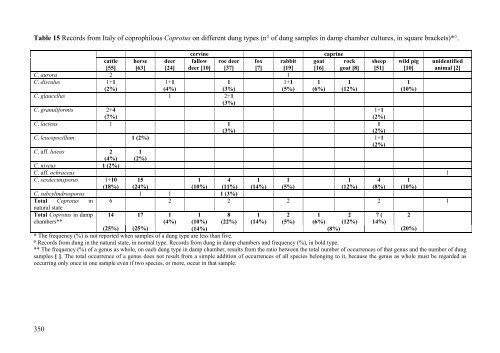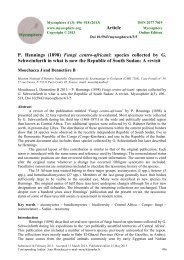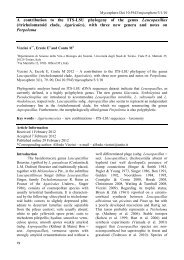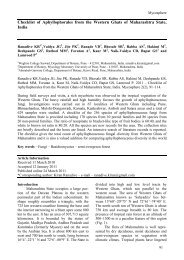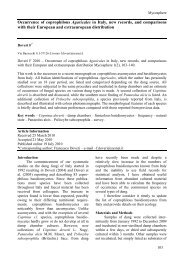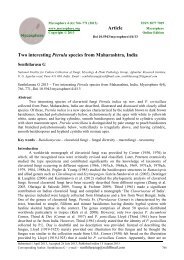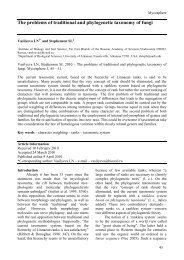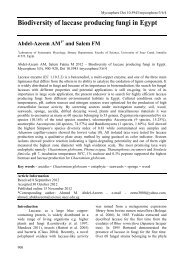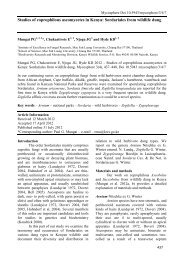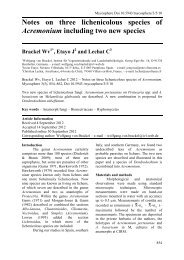Fungi Fimicoli Italici - Mycosphere-online journal
Fungi Fimicoli Italici - Mycosphere-online journal
Fungi Fimicoli Italici - Mycosphere-online journal
Create successful ePaper yourself
Turn your PDF publications into a flip-book with our unique Google optimized e-Paper software.
Table 15 Records from Italy of coprophilous Coprotus on different dung types (n° of dung samples in damp chamber cultures, in square brackets)*°.<br />
cervine caprine<br />
cattle horse deer fallow roe deer fox rabbit goat rock sheep wild pig unidentified<br />
[55] [63] [24] deer [10] [37] [7] [19] [16] goat [8] [51] [10] animal [2]<br />
C. aurora 2 1<br />
C. disculus 1+1<br />
1+1<br />
1<br />
1+1 1 1<br />
1<br />
(2%)<br />
(4%)<br />
(3%)<br />
(5%) (6%) (12%)<br />
(10%)<br />
C. glaucellus 1 2+1<br />
(3%)<br />
C. granuliformis 2+4<br />
1+1<br />
(7%)<br />
(2%)<br />
C. lacteus 1 1<br />
1<br />
(3%)<br />
(2%)<br />
C. leucopocillum 1 (2%) 1+1<br />
(2%)<br />
C. aff. luteus 2 1<br />
(4%) (2%)<br />
C. niveus 1 (2%)<br />
C. aff. ochraceus 1<br />
C. sexdecimsporus 1+10 15<br />
1 4 1 1<br />
1 4 1<br />
(18%) (24%)<br />
(10%) (11%) (14%) (5%)<br />
(12%) (8%) (10%)<br />
C. subcylindrosporus 1 1 1 (3%)<br />
Total Coprotus in 6 2 2 2 2 1<br />
natural state<br />
Total Coprotus in damp 14 17 1 1 8 1 2 1 2 7 ( 2<br />
chambers**<br />
(4%) (10%) (22%) (14%) (5%) (6%) (12%) 14%)<br />
(25%) (25%)<br />
(14%) (8%)<br />
(20%)<br />
* The frequency (%) is not reported when samples of a dung type are less than five.<br />
° Records from dung in the natural state, in normal type. Records from dung in damp chambers and frequency (%), in bold type.<br />
** The frequency (%) of a genus as whole, on each dung type in damp chamber, results from the ratio between the total number of occurrences of that genus and the number of dung<br />
samples [ ]. The total occurrence of a genus does not result from a simple addition of occurrences of all species belonging to it, because the genus as whole must be regarded as<br />
occurring only once in one sample even if two species, or more, occur in that sample.<br />
350


